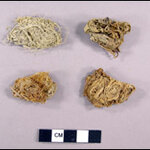Science category landing
Life Sciences

The AIDS virus (HIV) attacks immune system cells and once inside them it multiplies. In some of these immune cells, viral stocks are not very accessible to antiviral therapy. CNRS, Institut Curie and Institut Pasteur researchers investigating how HIV avoids being destroyed by immune cells have discovered that HIV alters the pH of the cellular compartments where it accumulates, thus stopping the activation of the very enzymes that would normally degrade it.
When viruses or infectious bacteria enter our body, the immune system is triggered to eliminate them, through a process involving various…

Tendon damage can sometimes be severe enough to end an athletic career but a consortium of scientists has identified unique cells within the adult tendon that have stem-cell characteristics —including the ability to proliferate and self-renew.
The research team was able to isolate these cells and regenerate tendon-like tissue in the animal model. Their findings hold tremendous promise for the treatment of tendon injuries caused by overuse and trauma.
Tendons, the tough band of specialized tissues that connect bone to muscle, are comprised of strong collagen fibrils that transmit force…

Ding dong - one of my bells emailed me today.
Someone was at the gate of the BioChemFoo area on Nature Island in Second Life and wanted assistance with setting up a poster.
When I logged on I found Lali Ewry (a researcher) and Bronwen Pizzicato (from Nature Protocols) still waiting there. Since there were no posters yet in the ChemBioFoo area I took them over to the adjacent SciFoo Lives On section to show them examples of what posters can look like in Second Life.
Lali had some slides available so I gave her one of Hiro's boards and showed her how to upload, re-size and move the poster. (By…

Reproductive efficiency has suffered a dramatic decrease since the mid-1980s despite rapid worldwide progress in genetics and management of high producing dairy herds.
Researchers from the University of Barcelona propose that summer heat stress is likely to be a major factor related to low fertility in high producing dairy herds, especially in countries with warm weather.
The environmental temperature, radiant energy, relative humidity, and wind speed all contribute to the degree of heat stress. Heat stress may be defined as any combination of environmental variables that give rise to…

With the help of genetically engineered mice whose livers turned into glowing light bulbs, researchers at the Salk Institute for Biological Studies have illuminated the underpinnings of an insidious and growing health concern— type II diabetes.
In the study published in the September 5 advanced online edition of Nature, the researchers report that a protein called TORC2 serves as a key biochemical control point linking feeding, insulin, and elevated blood sugar production in the liver. The findings highlight TORC2 and an enzyme called SIK2 as potential drug targets for treating type II…

Probiotics, the friendly bacteria beloved of yoghurt advertisers, may be an effective substitute for growth promoting antibiotics in pigs, giving us safer pork products, according to scientists speaking today (Wednesday 5 September 2007) at the Society for General Microbiology’s 161st Meeting at the University of Edinburgh, UK, which runs from 3-6 September 2007.
Scientists from the UK’s Veterinary Laboratories Agency in Weybridge, Surrey have shown that probiotics – the good bacteria taken by millions of people worldwide – can reduce the disease-causing Salmonella bacteria which infect…

Antibiotics are over-prescribed for bacterial infections and patients too often fail to complete their courses of treatment properly, which means many bacteria are able to pick up an entire array of antibiotic resistance genes easily by swapping genetic material with each other.
MRSA – the multiple drug resistant strain of Staphylococcus aureus - and newly emerging strains of the superbug Clostridium difficile have forced medical researchers to realise that an entirely different approach is required to combat these bacteria.
“By using a virus that only attacks bacteria, called a phage – and…

For the first time, scientists have extracted human DNA from ancient artifacts. The work potentially opens up a new universe of sources for ancient genetic material, which is used to map human migrations in prehistoric times.
Before this, archaeologists could only get ancient DNA from relics of the human body itself, including prehistoric teeth, bones, fossilized feces, or — rarely — preserved flesh. Such sources of DNA are hard to find, poorly preserved, or unavailable because of cultural and legal barriers.
By contrast, the genetic material used in the Harvard study came from two types of…

Bacterial parasites are a lot more creative than we thought. It turns out one species, Wolbachia, can insert almost its entire genome into the genomes of members of one host species (a fly called Drosophila ananassae), and can insert parts of its genome into the genomes of members of several other host species.
"We've found at least one species where the parasite's entire or nearly entire genome has been absorbed and integrated into the host's," says Jack Werren of the University of Rochester, principle investigator of the study and a world-leading authority on the Wolbachia parasite. "The…

It appears that chemical warfare has been around a lot longer than poison arrows, mustard gas or nerve weapons – about 100 million years, give or take a little.
A new study by researchers at Oregon State University has identified a soldier beetle, preserved almost perfectly in amber, which was in the process of using chemical repellants to fight off an attacker when an oozing flow of sap preserved the struggle for eternity.
The discovery is the earliest fossil record of a chemical defense response, scientists say, and indicates that this type of protective mechanism – now common in the insect…